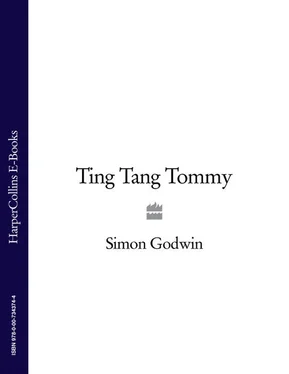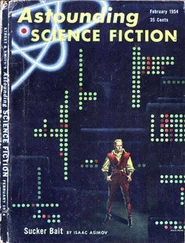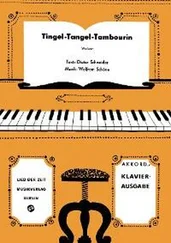Smashes are allowed, but they carry risks. Rather than directing the clap straight to the opposite team, players may pass the clap down the line to someone on their own side. However, if this person is distracted and hesitates then the other team wins a point. The clap may be passed along a team as many times as players wish, but everyone must maintain their position in the line and any hesitation must be leaped on and penalized by the umpire. The first team to score five points wins.
When I’m the umpire I build tension by winding up both teams as much as possible to win. When you’ve appointed a player to serve, tell them to wait for a visual cue. This gives everyone a chance to regain their focus. Position yourself between the lines at one end and begin by crying, ‘Let’s play Clap Volleyball!’
When I was starting out as a theatre director one of my earliest projects was a collaboration with the poet Simon Armitage. I had been a fan of his work for ages and, after leaving university, I had the idea of trying to persuade him to write a new version of a Greek tragedy called Heracles. Often, Greek tragedies are translated by academics rather than poets and I was convinced Simon could bring a raw, contemporary edge to the language of Euripides. I sent Simon the script of the play and he wrote back saying he would be very interested in doing the job, provided I could guarantee the play would actually get staged. Faced with this Herculean challenge, I began contacting theatres, trying to find a venue that would not only pay for the commission but would give an assurance that, barring natural disaster, they would stage the play. Theatres were excited about Simon Armitage but were less excited about Simon Godwin. Eventually, I persuaded the West Yorkshire Playhouse in Leeds—Simon’s local theatre—to meet me. Over the course of an hour I struggled to communicate my passion for the original play and its potential impact if rewritten by Simon.
Touched by my overpowering enthusiasm (if nothing else), the theatre decided to commission the play and so began a two-year process of writing and workshops to develop a new work—Mister Heracles—based on Euripides’ original.
The plot of the play was profoundly serious. The drama tells the story of a triumphant Heracles returning home after the completion of his labours only to suffer a breakdown and murder his wife and children. During rehearsals it was easy to become sucked into the play’s darkness and, to keep our spirits up, we played games. In order to work, these needed to be as silly and lively as possible. One of the actors in the cast taught us this game, which fitted the bill perfectly.
This game doesn’t need many players to work. Playing with a small number of people is actually better as you have to be on your toes even more than usual.
Everyone stands in a circle. The player who starts covers his nose with his fist to make a Mickey Mouse nose. The player to his right places his left hand behind his left ear to make a Mickey Mouse ear. The player to the left places his hand behind his right ear to make a Mickey Mouse ear on the other side. So you now have a nose and two ears made by three different players. The player with the nose now throws it across the circle to another player who ‘catches’ it. That person now has the Mickey Mouse nose and the two players either side of him must make the ears on the correct sides.
The nose is now ‘thrown’ faster and faster around the circle. You will find that people consistently forget to make the ears at the right time on the right side. Keep going until the nose is constantly moving, with hands moving from ears to noses to ears. The aim is to heighten everyone’s awareness of what is happening and to develop fast, intuitive reactions.
You can introduce a competitive edge by eliminating people who make a mistake. Or you can just play for the fun of it—enjoying the swirl of ears and noses. Some years later, I saw one of the actors at a crowded opening night in a theatre in London. Across the crowded stalls he ‘threw me a nose’.
 It’s always exciting to spot new games as they hit the scene. No one knows where they come from but suddenly there is a tipping point and everyone is playing them. I was thrilled to discover this game a few months ago. It’s already being played by more and more people I know and when you play it you’ll understand why. It’s a very well structured game and I think it’s a ‘non-submersible’, which means that it can withstand any context or degree of skill. It comes with its own inscribed magic.
It’s always exciting to spot new games as they hit the scene. No one knows where they come from but suddenly there is a tipping point and everyone is playing them. I was thrilled to discover this game a few months ago. It’s already being played by more and more people I know and when you play it you’ll understand why. It’s a very well structured game and I think it’s a ‘non-submersible’, which means that it can withstand any context or degree of skill. It comes with its own inscribed magic.
This game is a variant on the Consequences model, which I discuss in Chapter 4. The origins of this game are hinted at in a book called Kate Greenaway’s Book of Games from 1889. Here one player draws a famous scene from history or fiction and the other players have to write down what they think it is, before folding their suggestion over and passing their paper on. At the end players unfold their papers and read out a list of possible definitions. But this version, where everyone is constantly drawing and writing, is a lot more fun.
Everyone begins with a pile of papers, each about the size of a quarter of a piece of A4. It’s crucial that you begin with the right number of papers. For an odd number of players you’ll need the same number of papers; for an even number of players you will need one less. So for nine players you’ll need nine papers, for eight you’ll need seven. On their first piece of paper everyone writes down a film title. Now everyone passes their entire pile, with the title still on top, to the person on their left. This player looks at the title and places it at the bottom of the pile. Now they must attempt to draw the film title on this new piece of paper. They can do this either by breaking down the title of the film or by drawing an image that communicates its essential content. When this is done, players pass the entire pile to the player on their left. This person looks carefully at the picture and then puts it to the bottom of the pile and on the next new piece of paper writes down the title that it suggests to them. When they have done this they pass their entire pile to the person on their left, who reads the title, places it on the bottom and draws the picture that expresses it. It’s essential that the entire pile is passed on each time and this process of reading/writing/ drawing continues until people get their original title back.
After they have been reunited with their original title, each player now reveals their sequence of words and pictures. Players talk through their sequence, holding up one paper at a time. A potential example might go: I wrote down One Flew Over the Cuckoo’s Nest , Dad drew [show strange drawing of a flying bird]; Granny wrote Chicken Run , Mum drew [an abstract figure distantly related to a chicken fleeing a prison] and Grandpa wrote The Fugitive , and so on.
It’s fantastically rewarding when one series of papers manages to successfully convey one consistent title, but this is pretty rare. There is no winner; the pleasure lies in the often crazy relationship between image and title. Players should do their best to be as precise and detailed as possible but more often than not this is a celebration of distortion. Also, don’t be put off by people being confused or grudging at the start. The game reveals its magic gradually and it’s always thrilling to discover the way you arrive back at your title and the mad journeys everyone has gone on.
Читать дальше

 It’s always exciting to spot new games as they hit the scene. No one knows where they come from but suddenly there is a tipping point and everyone is playing them. I was thrilled to discover this game a few months ago. It’s already being played by more and more people I know and when you play it you’ll understand why. It’s a very well structured game and I think it’s a ‘non-submersible’, which means that it can withstand any context or degree of skill. It comes with its own inscribed magic.
It’s always exciting to spot new games as they hit the scene. No one knows where they come from but suddenly there is a tipping point and everyone is playing them. I was thrilled to discover this game a few months ago. It’s already being played by more and more people I know and when you play it you’ll understand why. It’s a very well structured game and I think it’s a ‘non-submersible’, which means that it can withstand any context or degree of skill. It comes with its own inscribed magic.










